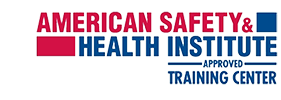Having an Automated External Defibrillator (AED) device at your business, school, or other organization is one of the most important steps you can take in saving an individual’s life in the event of a sudden cardiac arrest (SCA). AEDs deliver electric shocks to a person’s heart to stop abnormal electrical impulses, which subsequently allows it to return to its normal pattern of beating and functioning.
AED’s and CPR are a Life Saving Combination
Utilizing an AED, combined with CPR in the event of a cardiac arrest, gives the victim the best possible chance of surviving, as it increases the survival rate by 75%. That is why, thanks to the HB 914 law enacted in 2012 in North Carolina, all government buildings are required to have an AED on-site.
Why Your Office Should Have and AED On Site
Aside from ultimately saving an individual’s life, AED devices offer several benefits, such as restoring an individual’s heart signal, increasing the chances of survival, delivering life-saving emergency therapy in a timely manner, and so much more.
AEDs are user-friendly, powerful, and portable.
Good Locations for Storing Your AED
While simply having an AED device is important, the location of the AED within a building is almost equally important, as an AED is useless if it is not acquired in time in the event of an emergency. Here’s a couple things you should consider when choosing where to put an AED device.
What are the Most Probable Areas of the Building?
Obviously, your goal is to place the AED in a place where it can be retrieved as quickly as possible, since during the emergency, the AED device should be retrieved, activated, and administered within three minutes of the collapse, according to the American Heart Association. Every minute after that time frame decreases the victim’s chance of survival by 7-10%.
 So, the first step is determining what the most probable areas are of the building where a SCA may occur.
So, the first step is determining what the most probable areas are of the building where a SCA may occur.
Typically, the most probable areas tend to be where people congregate, such as:
- A reception area
- A lobby
- Lunch room
- Restroom facility
- Conference rooms
- Printer locations
Another probable area would be where at-risk or high activity might occur, such as gyms and fitness centers.
Basically, anywhere where individuals congregate or undergo strenuous physical activity is potentially a probable area. These are the places where your AED should be located, or only 3 minutes away from such areas.
The Technical Aspects of Your AED Unit Placement:
After determining which areas of the building are probable, the technical guidelines of the placement of an AED must be evaluated.
Consider the following bullet points when placing an AED:
- The AED must be highly visible and easily accessible to everyone at all times. Never locate an AED in an out of sight, or locked area. Also, have a clear pathway to the AED at all times.
- The height to access the handle of an AED in a public place must be no more than 48 inches, according to the Americans with Disability Act (ADA).
- The maximum side reach for an unobstructed approach to an AED is 54 inches.
- For multi-level buildings, each floor should have at least one AED near probable areas. This is to ensure that the AED is quickly retrieved, since having to retrieve one from another floor would expend valuable time.
- Place the AED near a phone so 911 can quickly be called.
- AEDs should be within 3 minutes away from probable areas (when walking at a brisk pace).
- The more probable areas, the more AEDs should be placed. If the company in question has several probable areas that are not close together, or if it operates in remote areas where EMS may take more time to arrive than usual, it is ideal to have AEDs in the majority, if not all, of these locations.
- The AEDs should be close to trained individuals. Although ideally, everyone in a workplace has received training on how to operate an AED and perform CPR, this is often times not the case. So, be sure that the AED is located near individuals who are trained or move the trained individuals closer to the AED. Learn more about our Heartsaver Pediatric First Aid CPR AED course today if you’re a childcare worker, teacher, foster care worker, camp counselor, or coach!
What Other Items Should Be Placed with an AED?
While this is not required, having these items near the AED helps rescuers to perform their duties as effectively as possible.
Items that should be placed with or near an AED include:
- Gloves
- CPR mask for delivering CPR both safely and effectively
- Absorbent towels in case the victim’s chest is sweaty or wet
- Blunt scissors for cutting clothing away from chest for AED pad
- A safety razor to trim victim’s chest hair if it interferes with AED pad adhesion
- A biohazard bag to dispose of potentially infectious materials
Ensure the Safety of Your School, Business, or Other Entity Now with Both an AED Device and CPR/AED Training!
When a sudden cardiac arrest occurs, time is extremely valuable. Immediately performing CPR, along with utilizing an AED, can be the key factors in saving an individual’s life, as performing these duties increase the victim’s chances of living by 75%. However, in order to perform these actions, it is important to not only have an AED device on-site, but to also receive proper training.
Our team at CPR Educators Inc. can provide engaging and informative training on both CPR and AED devices that thoroughly equip you for emergency situations. Don’t wait any longer to ensure an individual’s safety, sign up for your CPR and AED training and purchase your AED now!
Call our team at (919) 639-4848 or register for classes online.



